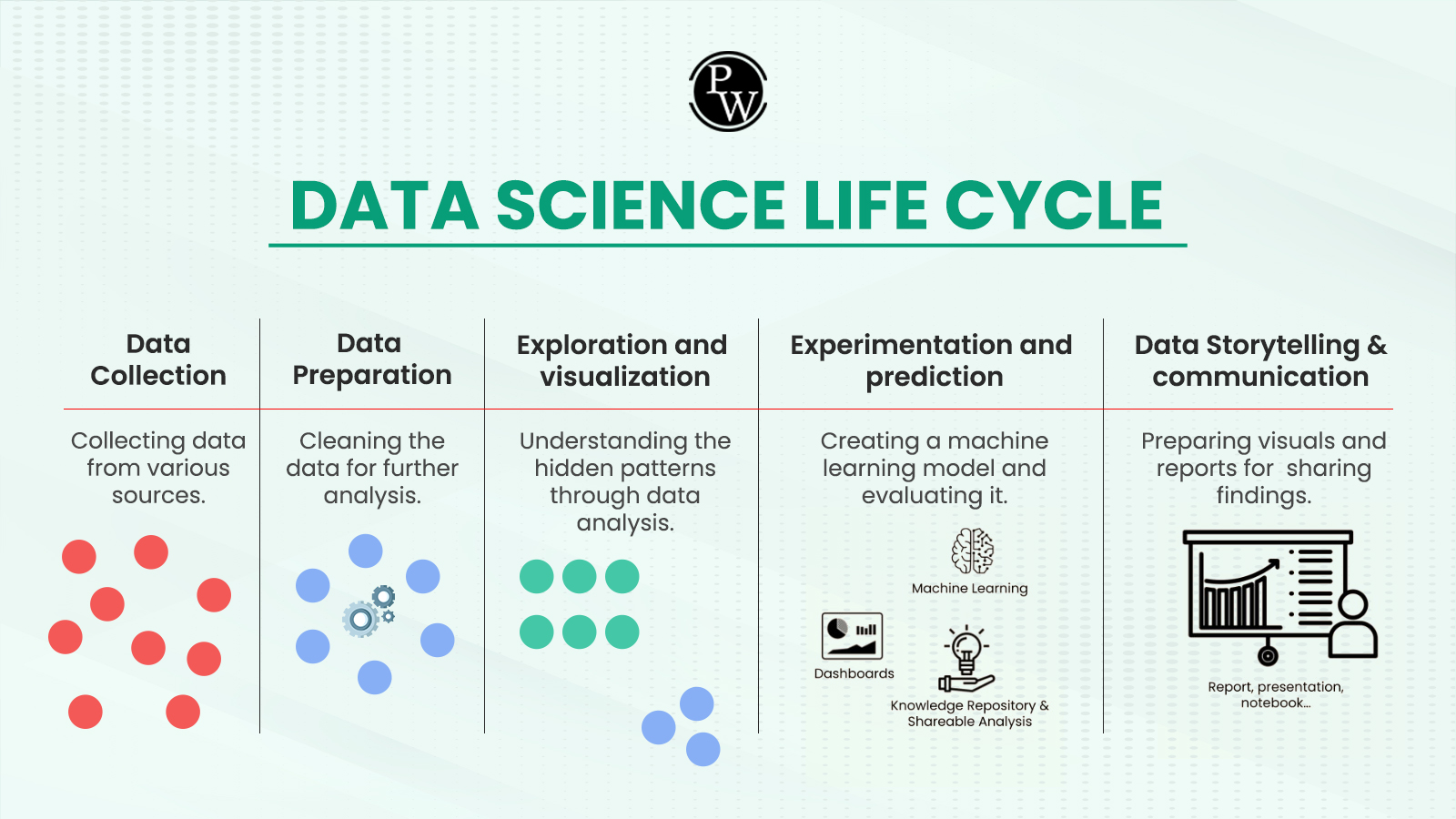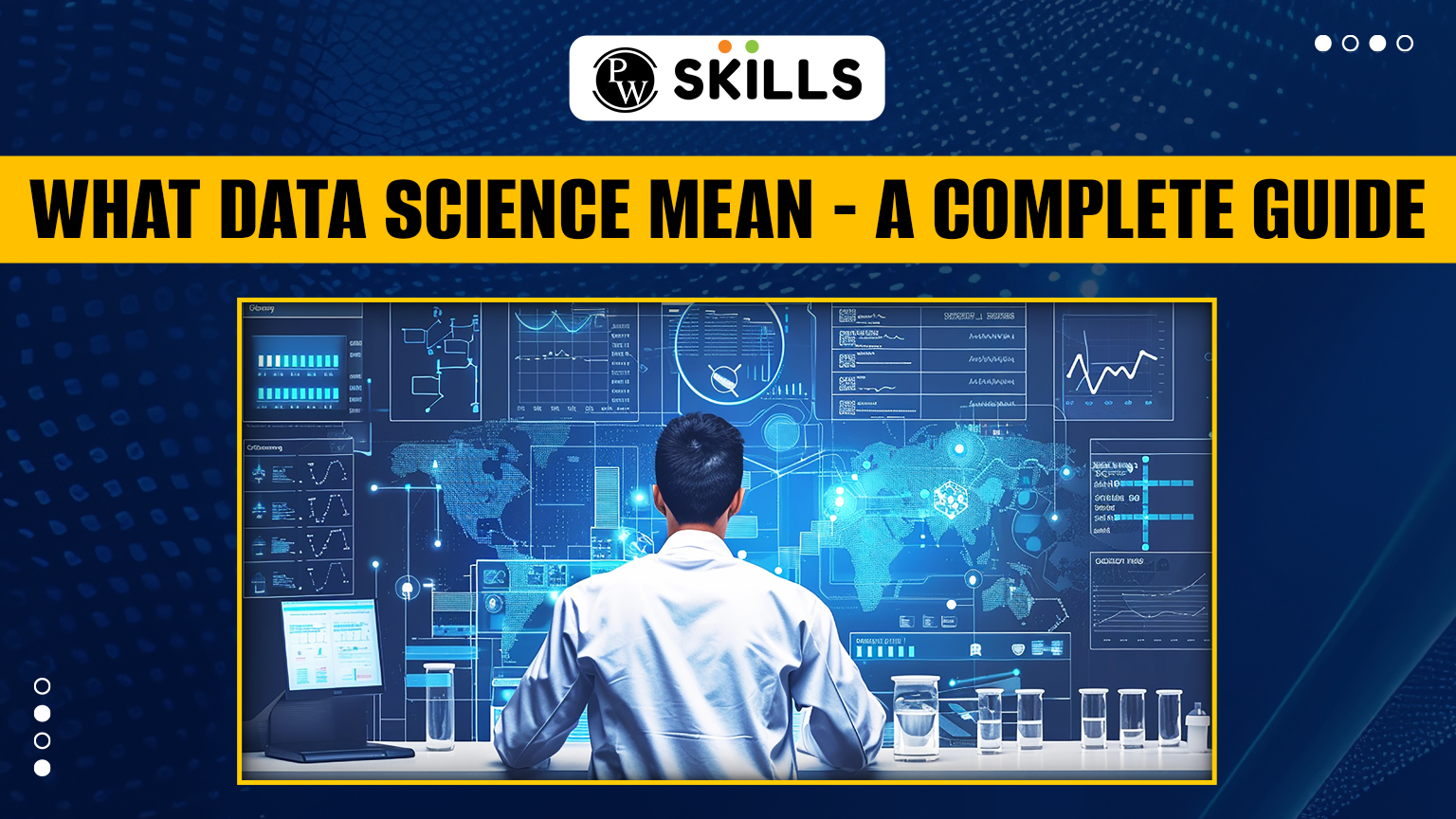Data science is a dynamic and growing field that combines statistical analysis, machine learning, and data visualization to extract meaningful insights from vast amounts of data. In this detailed guide, we’ll explore the core concepts of data science, its applications across various industries, and the tools and techniques that data scientists use to turn raw data into actionable knowledge. Whether you’re a beginner curious about the basics or a professional looking to deepen your understanding, this guide will provide you with a clear and understandable overview of what data science mean and how it can drive innovation and decision-making.
What Does Data Science Mean?
Data Science mean in simple terms is like being a detective who uses data to solve mysteries. Imagine you have lots of information, in the form of numbers, text, or images. A data scientist’s job is to look at this information, find patterns, and derive meaningful insights from it. They use tools and techniques to analyze data.
For example, a data scientist generally looks at shopping data to find out what products are popular among users, and which ones are lagging behind. They collect data, clean it up, analyze it, and then make conclusions that help businesses or researchers make better decisions. In short, data science turns raw information into valuable insights.
Data Science Life Cycle
The data science lifecycle is a process that guides data scientists through a series of steps to extract insights and knowledge from data. Consider it like a roadmap for solving problems using data. Each step in this cycle helps you gather, clean, analyze, and interpret data to make better decisions or understand trends. Let’s break down each step to make it more clear to you.

Steps in the Data Science Lifecycle
- Understanding the Problem- Before diving into data, it’s crucial to know what question you’re trying to answer or what problem you’re trying to solve. Understanding the problem clearly will help you to solve it with a better approach.
- Data Collection- This step involves gathering the data you need. Data can come from various sources such as websites, databases, or even physical records. Data Scientists basically research data from various sources and then gather it all at one place for analysis.
- Data Cleaning- Raw data often has errors or is incomplete. Data cleaning involves fixing these issues by filling in missing data, removing duplicacy, and redundancy to make sure your data is accurate and complete.
- Data Analysis- Once your data is clean, you start analyzing it. This means looking at patterns, trends, using various techniques like simple calculations, creating charts, or using statistical methods to analyze the data and summarizing the main features of it.
- Modeling and Evaluation- Modeling involves building algorithms or mathematical models to predict outcomes or find deeper insights. After creating a model, you need to check how well it works. This involves testing the model to see if it accurately predicts or explains the data.
- Communicating Data Findings- The final step is to present your findings in a clear and engaging way. This involves creating visuals, reports, and presentations to explain your insights to others.
Why Data Science Is Important?
Data science is a field that combines knowledge of different tools to extract meaningful insights from data. In today’s world, businesses and organizations generate a massive amount of data every second, and Data science helps a lot in making sense of this data.
Below are some of the key reasons explaining the importance of data science in today’s time.
1. Data Volume
Data volume refers to the vast amount of data generated by various sources such as social media, online transactions, web browsing, and more.
With so much data being produced, it becomes impossible to manually analyze and extract useful information. Data science uses advanced tools and techniques to handle and analyze these large volumes of data and uncover various hidden trends from it.
2. Value Creation
Value creation is about turning scrap data into useful information that can improve decision-making, optimize processes, and create new opportunities. By analyzing data, businesses can identify customer preferences, streamline operations, and predict market trends. This not only enhances efficiency but also drives the growth and innovation of a business.
3. Career Options
Career options refer to the various job roles and opportunities available in the field of data science. Data science being a growing and in-demand field offers a wide range of career paths, including roles such as data analyst, data engineer, machine learning engineer, and data scientist.
These careers are in high demand because organizations across all industries need skilled professionals to make sense of their data and drive decision-making processes.
Different Types Of Data Analytics
Data Science is like a toolkit that helps us understand how to make use of large amounts of information. Let us look at some of the most common data analytics techniques that will help you understand the concept better.
1. Descriptive Analytics
Descriptive Analytics is the part of Data Science that looks at what has happened in the past. For example, a departmental store might look at sales data from last year to see which products sold the most. This helps them understand trends and patterns, making it easier to plan for the future.
2. Diagnostic Analytics
Diagnostic Analytics basically finds the cause of the problem, asking why something happened. If Descriptive Analytics tells you that sales went down last month, Diagnostic Analytics will give you the reason of why this particular thing happened.
3. Predictive Analytics
Predictive Analytics is about looking into the future. It uses data from the past to make guesses about what might happen next. For instance, if you know that umbrella sales go up when it rains, you can predict that an upcoming storm will boost umbrella sales.
4. Prescriptive Analytics
Prescriptive Analytics takes predictions to the next step by suggesting actions you can take. For example, if a store predicts a high demand for umbrellas, Prescriptive Analytics will suggest ordering more umbrellas and running a special promotion to attract customers.
Data Science Applications
Data science is a powerful tool that uses statistical methods, algorithms, and technology to extract insights from data. Here are some real-world applications of data science across various industries:
1. Healthcare
In healthcare, data science is used to predict patient disease and streamline operations. For example, Data science helps in personalized medicinal care, where treatments are designed for individual patients based on their genetic information and medical history. Additionally, machine learning models can detect diseases like cancer at an early stage by analyzing medical images.
2. Finance
The finance industry uses data science for risk management, fraud detection, and personalized customer experiences. Algorithms can analyze transaction patterns to detect unusual activities, reducing fraud. In investment banking, data science models predict stock prices and market trends which generally assist traders in making informed decisions. Apart from this, Personalized financial services, like loan offers and investment plans, are also developed using data analytics.
3. Retail
Retailers use data science to enhance customer experiences and optimize operations. By analyzing purchasing patterns, companies can recommend products that customers are likely to buy, which helps them to increase sales. Inventory management is also improved through predictive analytics, which helps in maintaining optimal stock levels and reducing wastage.
4. Transportation
In transportation, data science improves efficiency and safety. Ride-sharing companies like Uber and OLA use algorithms to predict demand and optimize routing, reducing wait times for passengers and fuel consumption for drivers. Public transportation systems use data to analyze traffic patterns and optimize routing accordingly.
Entertainment
The entertainment industry uses data science to understand audience preferences and enhance content delivery. Streaming services like Netflix and Spotify analyze user behavior to recommend movies, shows, and music that users are likely to enjoy. Data science also helps in optimizing the release times of new content to attract and retain subscribers.
5. Education
Educational institutions apply data science to improve student outcomes and administrative efficiency. By analyzing student performance data, schools can identify at-risk students and provide required solutions. Data science also helps in designing personalized learning experiences, where educational content is specially designed to individual student’s needs.
Tools Used In Data Science
There are various tools that assist in different stages of the data science process. Here are some key tools commonly used in data science, along with their importance and working, learning these below-mentioned tools will help you get an understanding of what Data science mean.
1. Python
Python is a versatile programming language widely used in data science due to its simplicity and readability. It offers a variety of libraries like Pandas for data manipulation, NumPy for numerical computations, and Matplotlib for data visualization. Python’s flexibility makes it suitable for tasks ranging from data cleaning to building complex machine-learning models.
2. R
R is a programming language specifically designed for statistical analysis and data visualization. It provides strong and reliable statistical packages and tools for data analysis and visualization. R is particularly popular among statisticians for its powerful statistical computing capabilities.
3. SQL
SQL stands for Structured Query Language, it is essential for managing and querying relational databases. It allows data scientists to efficiently retrieve, manipulate, and manage large datasets stored in relational databases. SQL is crucial for data extraction and storing of processed data.
4. Jupyter Notebook
Jupyter Notebook is an open-source web application that allows the creation and sharing of documents containing live code, equations, visualizations, and narrative text. It is extensively used for data cleaning, transformation, visualization, and machine learning.
5. Tableau
Tableau is a powerful data visualization tool used to create interactive and shareable dashboards.
It helps in transforming raw data into understandable, interactive graphics. Tableau is user-friendly and enables data scientists to visualize trends, patterns, and insights effectively.
6. Excel
Excel is a spreadsheet program that is widely used for basic data analysis and visualization. It offers tools for data organization, calculation, and visualization through charts and graphs.
7. Apache Hadoop
Hadoop is an open-source framework that allows for the distributed processing of large data sets across clusters of computers.
Hadoop is essential for big data processing, enabling data scientists to handle vast amounts of data efficiently.
8. TensorFlow
TensorFlow is an open-source machine-learning library developed by Google.
It is used for building and training machine learning models, especially deep learning models.
9. Scikit-Learn
Scikit-Learn is a Python library for machine learning. It provides simple and efficient tools for data mining and data analysis, supporting various machine learning algorithms such as classification, regression, clustering, and more.
Learn Data Science With PW Skills
Learn what data science mean with PW Skills comprehensive Data Science Classes! Dive into the fundamental concepts of data science, and explore the exciting world of Artificial Intelligence.
If you are an individual looking to start your career in the field of data science, then this course is perfect for you! By learning through real-life concepts taught by expert industrialists having over a decade of experience, regular doubt-clearing sessions, and daily practice sheets you’ll understand all the terms and tools related to data science efficiently.
Visit pwskills.com today and don’t miss this opportunity to boost your career growth!
Data Science Mean FAQs
What is data science?
Data science is a vast field that combines statistics, computer science, and other expertise to extract insights and knowledge from raw data. It involves processes like data collection, cleaning, analysis, and interpretation to make informed decisions.
Why is data science important?
Data science is important because it helps organizations make data-driven decisions, identify trends, optimize operations, and improve products and services. It enables businesses to gain a competitive edge by using data to solve complex problems.
What are the main components of data science?
The main components of data science include data collection, data cleaning and preprocessing, data analysis, statistical modeling, machine learning, data visualization, and much more.

